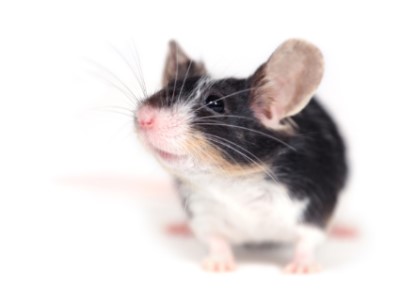Common Reasons for Surrender
Rats often end up in a rescue or in a shelter because their families no longer have time for them. Like other pets, rats are also surrendered because a family member develops allergies, a family moves, a couple divorces, a new baby arrives, or they can no longer afford to care for a pet anymore.
Pros
Most people mistakenly believe that rats are dirty when, in reality, they are extremely clean, social, and loving animals. Many enjoy being pet, sitting on their human’s shoulder, falling asleep in their human’s arms while watching television, and playing hide-and-seek. Like other pets, all rats have their own unique personalities. Because they are such social animals, most do well with a rat friend.
Cons
Rats have great memories, and they’re persistent. So, if you don’t want your rat in your closet, keep the door shut at all times. If he gets into the closet, he knows what’s there, and he’s going to spend all of his time when he’s out of his cage trying to get back inside the closet, whether by chewing the door or the carpet. Male rats, in particular, love chewing and need chew toys to keep them from chewing carpet and doors during their time out running around. Some people also do not like that rats have a relatively short lifespan of two to three years.
Diet
Your rat’s diet will really depend on what you prefer to feed him. Some people prefer giving Lab Blocks while others do not because of moral issues. Lab blocks are typically made by companies that also breed rats and other rodents for lab experiments. You can feed your rat solely Lab Blocks, which will give him everything he needs nutritionally. However, he will also become bored eating the same thing every day.
Any Rat Rescue recommends feeding rats a healthy mix you can easily make yourself. The mix can include oatmeal or a cereal without sugar and dried fruits and vegetables. Sunflowers, wasabi, multi-grain Cheerios, rice and pasta are also healthy ingredients you can add to your rat’s food mix. Rats can eat just about anything humans can; if you wouldn’t eat it, don’t feed it to your rat.
Rats also love treats. Opt for the healthy option and instead of buying yogurt drops in the grocery or pet store, give your rat a bit of dried fruit. Some rats also enjoy plain yogurt as a treat.
Exercise
Your rat will get plenty of exercise on her own, but you must customize her cage to give her enough to do. Most rats love running in a wheel; the Silent Spinner is a popular option. Fill your rat’s cage with things for him to do, which will allow him to exercise. Put plastic tunnels or paper towel rolls in for him to run through, the latter of which you will have to change frequently because of urine and feces. Small boxes, such as tissue boxes, are great for climbing, running, and hiding in. Rats like to forage for food, so find places to hide pieces of food for your rat to sniff out.
Be sure your rat also gets time outside of his cage to run around. Some people prefer having rat-proofed, enclosed spaces to allow their rats to run while others just let their rats run free in a rat-proofed room. Remember to keep any doors to closets or drawers shut that you don’t want your rat to explore.
Possible Health Issues
Rats are susceptible to a multitude of health problems, including respiratory issues, heart problems, and tumors.
If you bring a new rat or rats into your home and you already have a rat, the new rat(s) must first be quarantined for approximately two weeks to ensure he isn’t sick and doesn’t bring an illness or a disease into your home. The problem is you cannot simply quarantine a rat in another part of your home. You must find another location—such as a friend’s or a family member’s home—for the quarantine. Many rat owners do not quarantine, as it is often a difficult and complicated process. (Some experts say a two-week quarantine is sufficient while others recommend longer.) If you opt not to quarantine, you do so at your own risk.
Litter
Make sure your rat has a healthy litter or bedding. Bedding should never be cedar, pine, or anything that is dusty. CareFresh, Yesterday’s News, and Eco Bedding are all safe and healthy options. Some people use shredded newspaper, which typically needs to be changed daily while others use pieces of fleece or other soft fabrics. Fleece is an affordable option. Simply take it out, replace it with clean fleece, wash the soiled fleece, and repeat. It’s also comfortable for the rats. Use whatever works best for you and for your rat.
Some rats do well with a small litter box in their cage, so they have a specific area to eliminate. If you use a litter box, make sure you use a different type of litter than you use for the bedding for the rest of the cage.
Grooming
Rats groom themselves, which means if your rat has a rat friend, he and his friend will be able to groom each other. (Rats are also social animals and prefer living with other rats.) You generally do not have to give your rat a bath, although you can occasionally if you so choose.
Housing
Provide your rat with a spacious cage, preferably one that has multiple floors. Wire cages with a metal bottom are best for ventilation. Avoid using aquariums and plastic.
Entertainment
Most rats crave attention from other rats and from their humans. Keep your rat entertained in her cage by providing her with things to do: Tunnels to run through, boxes in which to hide and on which to climb, and a wheel for running. Hide small pieces of your rat’s food to allow him the fun of foraging. Rats also need time outside of their cage, whether to sit on your shoulder and watch television with you or to run around a rat-proofed area. Make sure your rat gets outside of his cage every day.
We want to thank Any Rat Rescue and Cathy McDonagh for help with this profile.







